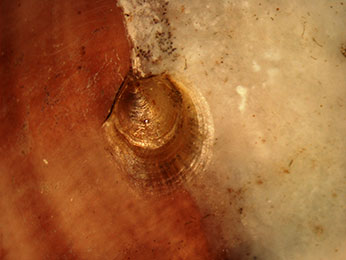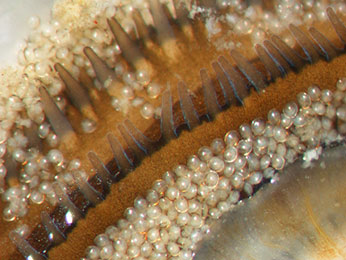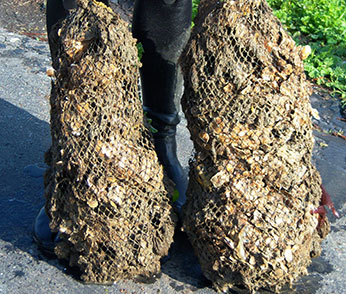Once common in California’s bays and estuaries, the native Olympia oyster (Ostrea lurida) nearly disappeared as a result of overharvesting and loss of suitable substrate. Recently, restoration efforts have been undertaken to create habitat for native oysters in the form of artificial reefs created from farmed Pacific oyster shell, also known as cultch.
From 2007 to 2011, we monitored a new artificial reef constructed by our colleagues Bud Abbott and Rena Obernolte, on tidelands owned by the Marin Rod and Gun Club in San Rafael, San Francisco Bay. We collected data relating to oyster settlement, growth rate, reproductive development, and pathogen presence.
We documented settlement of juvenile oysters onto the artificial reef and witnessed these oysters develop into adults, some of which were capable of reproduction in a few months. At peak recruitment, the reef was estimated to have a population of more than half a million native oysters. Although more work is needed, results from this study provide a greater understanding of the native oyster’s biology and restoration potential using this method of habitat enhancement.
 One month after the reef was established, we found native oysters settling on the Pacific oyster shells.
One month after the reef was established, we found native oysters settling on the Pacific oyster shells.
 Unlike the larger Pacific oysters, native oysters brood their young. Tiny larvae or veligers surround the mantle tissue of the adult.
Unlike the larger Pacific oysters, native oysters brood their young. Tiny larvae or veligers surround the mantle tissue of the adult.
 Bags of farmed oyster shell are used to create artificial reefs that provide a substrate on which native oyster larvae can settle. These bags are from a restoration project in San Francisco Bay.
Bags of farmed oyster shell are used to create artificial reefs that provide a substrate on which native oyster larvae can settle. These bags are from a restoration project in San Francisco Bay.